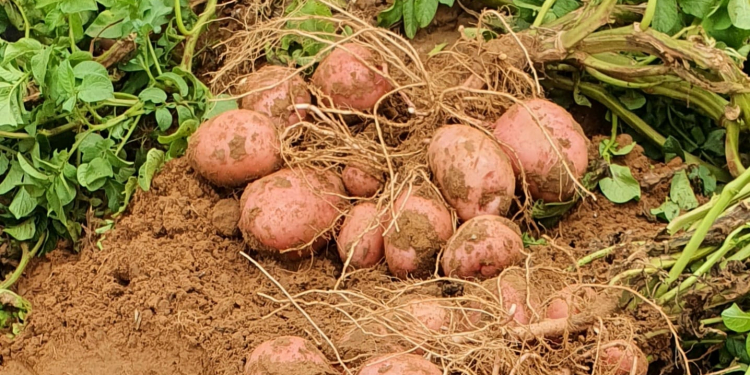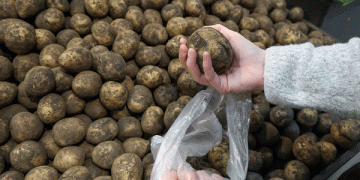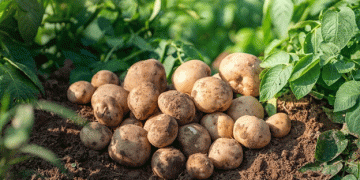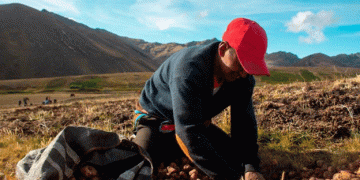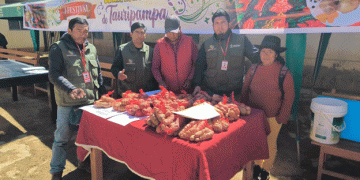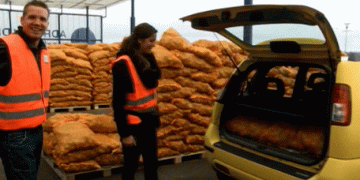Agronomists need to know stem population to be able to model tuber numbers.
Growers should soon be able to assess the variation in potato plant populations at field scale at any given time. This is thanks to work done by Harper Adams University, AHDB funded PhD student Joseph Mhango. His new decision-making tool uses artificial intelligence known as Deep Learning alongside drone-taken images of the crops to calculate stem numbers, and map where they occur.
This technique is able to detect objects, and is used for machine vision in self-driving cars. Mr Mhango said: “Agronomists need to know stem population to be able to model tuber numbers.
“Over the past two years, we have been developing some techniques based on artificial intelligence to start solving the problem of how best to estimate the differences in stem density across a potato field at full canopy, normally at 70 days after planting.” By analysing vegetation indices using regular red, blue and green wavelengths taken by the drone, Joseph discovered that meristematic tips of potato plants can be counted and used to represent stem tips.
Deep Learning was then used to develop a robust model for estimating stem numbers which can be used to produce a heat map of stem population density across a field. The tool is primarily aimed at facilitating harvesting decisions, so that areas with greater numbers of tubers can be left more time to bulk, while those with fewer, larger tubers are harvested first.
“Previously trained models show that where there are more stem numbers per area of ground, higher numbers of tubers are to be expected at a cost of the average tuber size. ” He noted that growers are well familiar with the relationship between potato stem population and tuber yield as well as size distribution, and decisions on harvest timings are normally based on a number of yield digs across the field.
“The difference between this model and others was that it provides the ability to measure within-field variation to provide information to outline management zones in precision farming. ” Joseph’s new model has been tested in a number of potato fields across Shropshire and Lincolnshire, and is looking very promising, he said. “The new tool will make precision farming much easier to achieve, as the information can then inform decisions on desiccation timings and harvesting, but also pesticide and herbicide applications.”

Translating fertiliser into yield
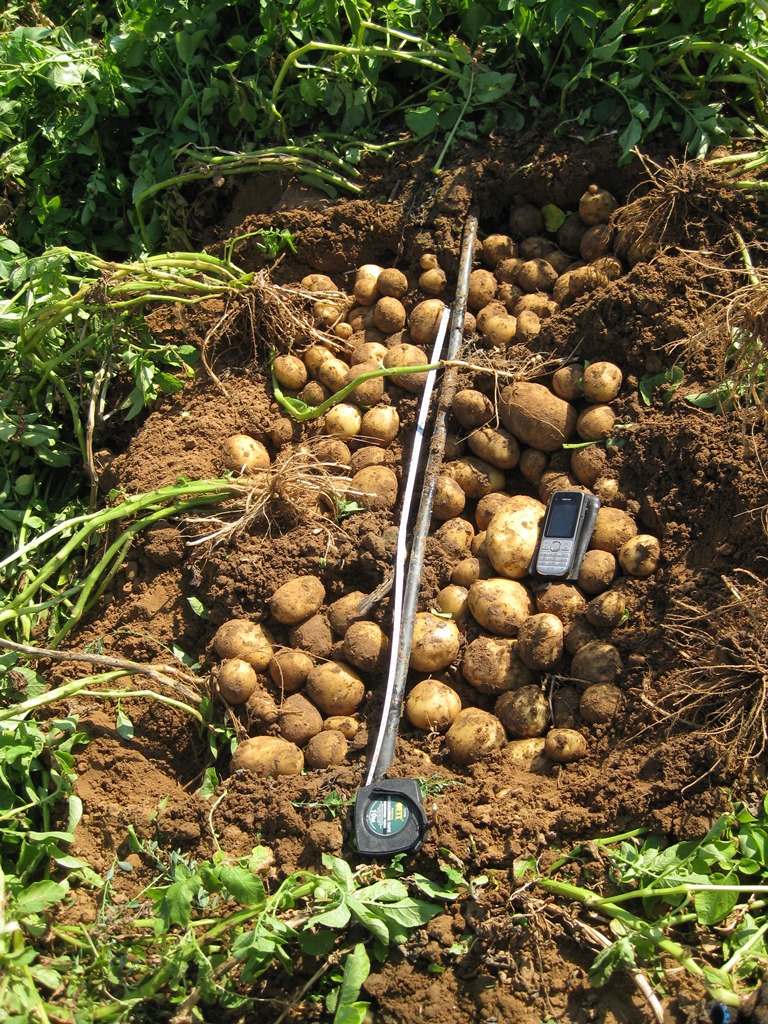
Also as part of his studies he has been mapping potato crop performance across five fields, looking at fertiliser applications of nitrogen (N), phosphorus (P) and sulphur (S) and the differences in how they translate to yield, and at what point they stop contributing. “The response to soil nutrients can vary across the field because of levels already available in the soil. “Soil samples were taken after fertiliser application, and in most of the fields we found evidence of over-fertilisation which associated higher levels of P within a field with smaller tuber sizes.”
“Our understanding has been that a tuber bulking hierarchy exists in potatoes and only a subset of dominant tubers take advantage of optimum levels of nutrients. “However, at the high nutrient levels observed in growers’ fields, we are gathering evidence that this may not always be true. “The findings show that the all fields in the study are operating at beyond-optimum levels of nutrients, and within these fields, there was a significant negative relationship between P levels and tuber size distribution.
“Rather than using randomised experiments with controlled treatments, we wanted to understand the relationship between soil and tuber size distribution in actual field conditions.” As a result, he took a geo-statistical survey approach to build models, This, he believes, has allowed us to build models with coefficients that better reflect the relationships observed in typical farmers’ fields”. “In many cases, farmers may be over-fertilising to try and ensure their crops have sufficient nutrients, but this may be causing a detrimental effect on yield and quality.”
The three-dimensional nature of these models enables integration with the stem-counting model, as well as the inclusion of satellite imagery to improve predictions. A third component of Joseph’s PhD involves the integration of freely-available high-resolution multispectral satellite imagery of the soils and canopy from his study sites. “We will measure the extent to which satellite imagery can help achieve better predictive accuracy of potato yield and tuber size distribution in advance of harvest.”
Watch the presentation from Agronomy Week:
Sectors: Potatoes
